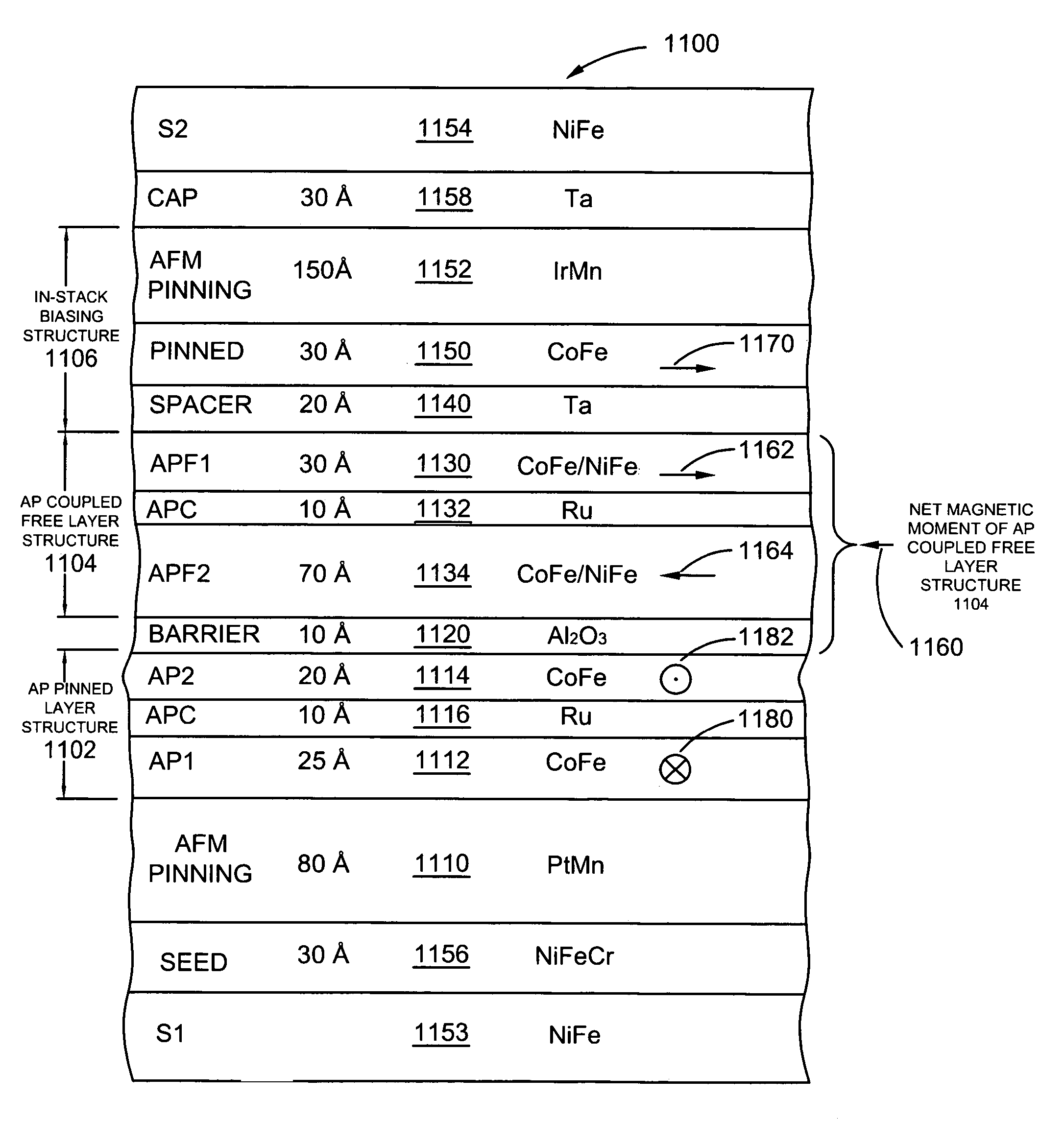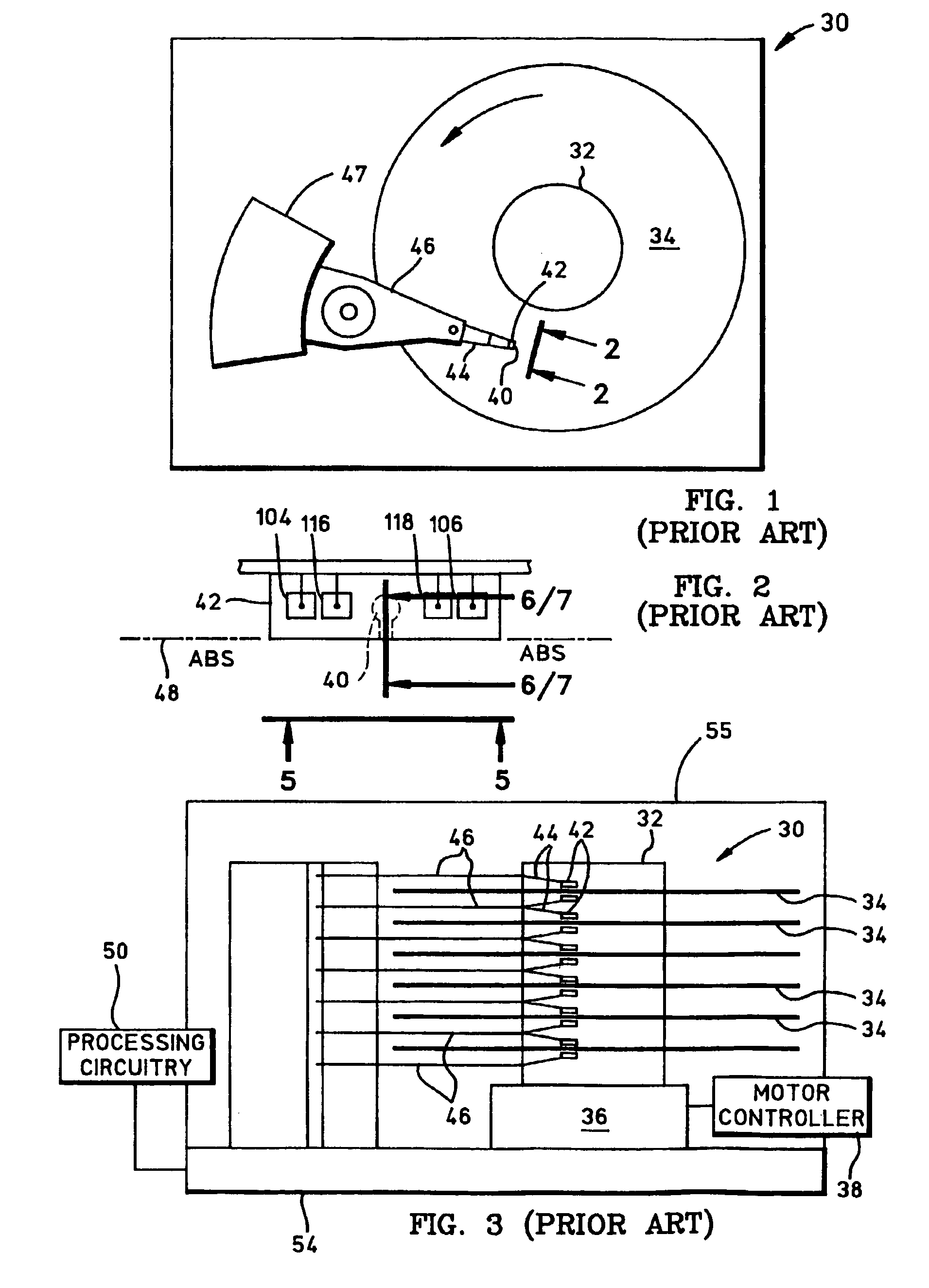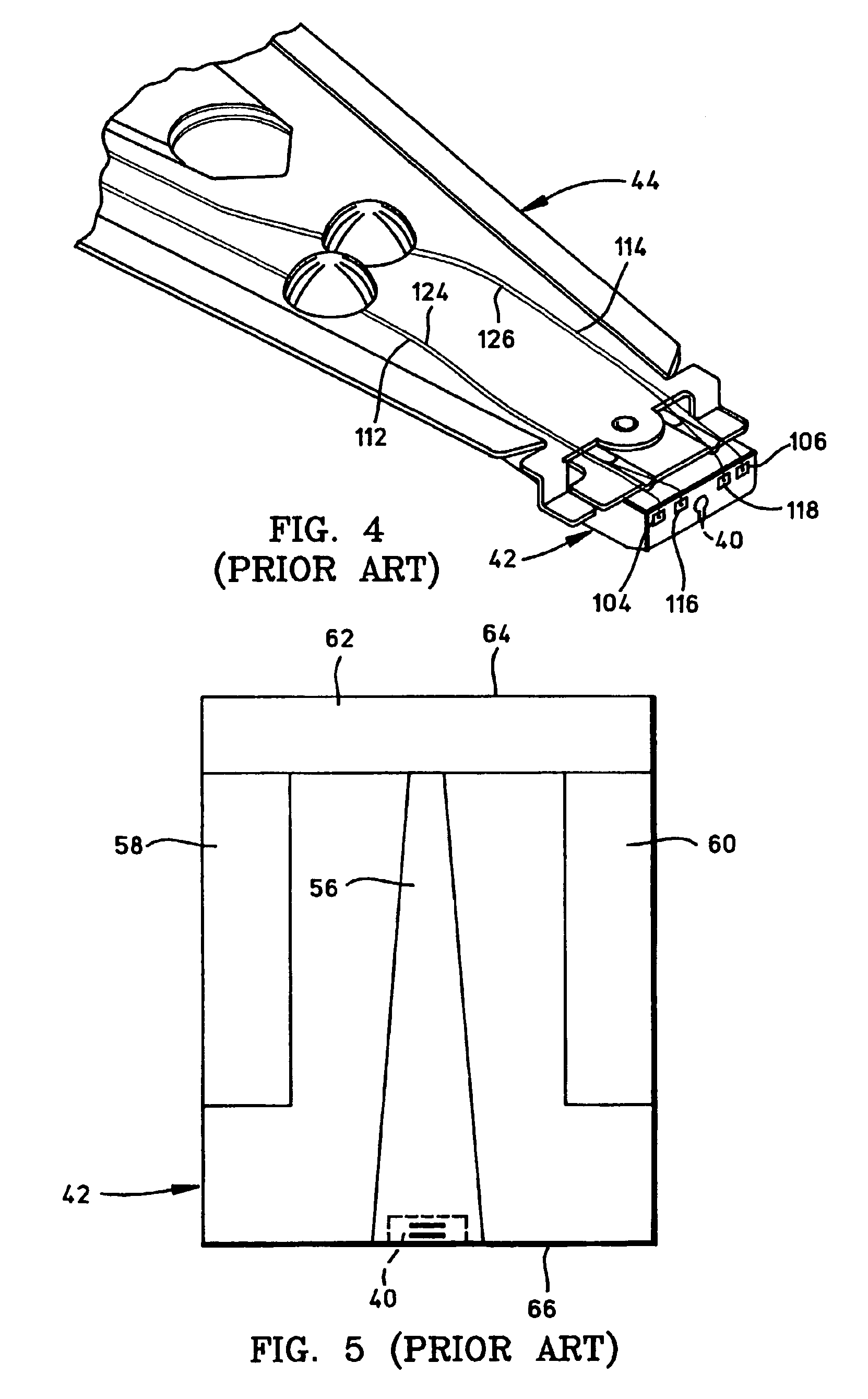Read sensor having an in-stack biasing structure and an AP coupled free layer structure for increased magnetic stability
a free layer and sensor technology, applied in the field of read sensors of magnetic heads, can solve the problems of unstable magnetic spin of the free layer, difficult to accurately control the current fabrication method, and produce magnetic noise in response, and achieve the effect of increasing the stability of the ap coupled free layer structur
- Summary
- Abstract
- Description
- Claims
- Application Information
AI Technical Summary
Benefits of technology
Problems solved by technology
Method used
Image
Examples
Embodiment Construction
[0033]A magnetic head includes first and second shield layers and a read sensor formed between and in electrical contact with the first and second shield layers, where the read sensor is of the current-perpendicular-to-the-plane (CPP), current-in-to-the-plane (CIP) or tunnel valve type sensor. The read sensor includes an antiparallel (AP) coupled free layer structure, an in-stack biasing structure which stabilizes the AP coupled free layer structure and a nonmagnetic spacer layer formed between the in-stack biasing layer and the AP coupled free layer structure. The AP coupled free layer structure comprises a first AP coupled free layer adjacent to the nonmagnetic spacer layer, a second AP coupled free layer and an antiparallel coupling (APC) layer formed between the first and the second AP coupled free layers. The net moment of the AP coupled free layer structure has an antiparallel edge magnetostatic coupling with the in-stack biasing structure. At the same time the first AP couple...
PUM
| Property | Measurement | Unit |
|---|---|---|
| magnetic | aaaaa | aaaaa |
| thickness | aaaaa | aaaaa |
| net magnetic moment | aaaaa | aaaaa |
Abstract
Description
Claims
Application Information
 Login to View More
Login to View More - R&D
- Intellectual Property
- Life Sciences
- Materials
- Tech Scout
- Unparalleled Data Quality
- Higher Quality Content
- 60% Fewer Hallucinations
Browse by: Latest US Patents, China's latest patents, Technical Efficacy Thesaurus, Application Domain, Technology Topic, Popular Technical Reports.
© 2025 PatSnap. All rights reserved.Legal|Privacy policy|Modern Slavery Act Transparency Statement|Sitemap|About US| Contact US: help@patsnap.com



